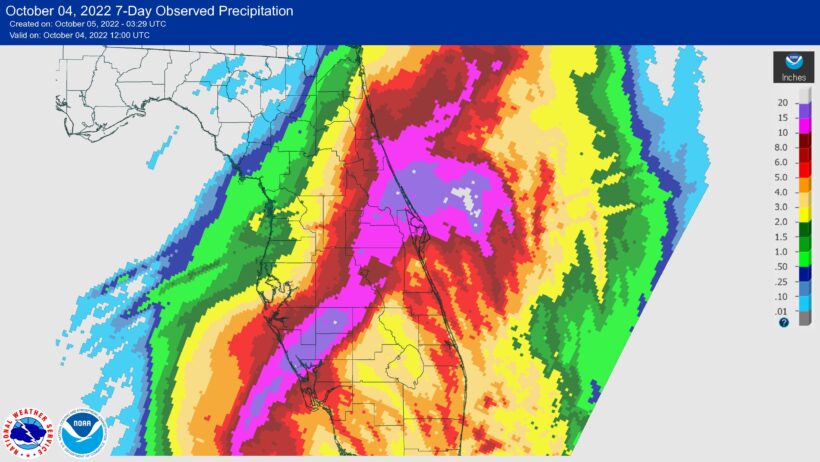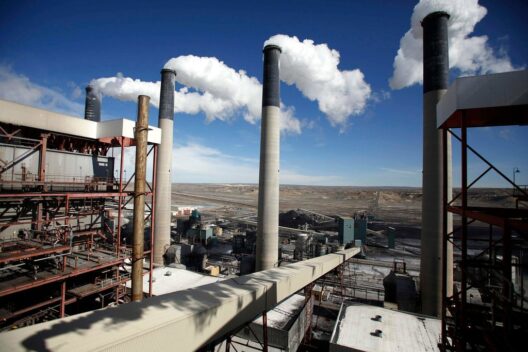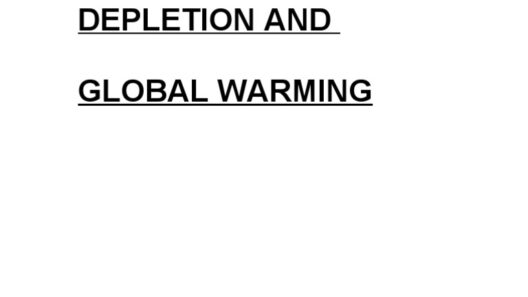Hurricanes and typhoons are not merely meteorological phenomena; they are intricate consequences of our planet’s evolving climate. As global warming continues unabated, the relationship between increased temperatures and storm intensity becomes undeniably pronounced. It is imperative to grasp how even minute shifts in our environment can escalate the frequency and ferocity of these powerful tempests.
To understand this connection, we must first delve into the mechanics of hurricanes and typhoons. These storms form over warm ocean waters, typically at temperatures exceeding 26 degrees Celsius (approximately 79 degrees Fahrenheit). The evaporation of warm water fuels the storm, heightening its strength as moist air rises and cools, forming clouds and releasing latent heat, which further amplifies the storm’s power. This cycle of rising warm air and falling cool air cannot sustain itself without sufficient thermal energy; hence, the critical role of ocean temperatures in the formation and intensification of these natural disasters.
With climate change orchestrating an unprecedented rise in oceanic temperatures, the stage is set for hurricanes to burgeon into catastrophic entities. The Intergovernmental Panel on Climate Change (IPCC) grimly predicts that the intensity of these storms will escalate as global temperatures rise by 1.5 degrees Celsius above pre-industrial levels. A singular degree may appear inconsequential, yet its implications are monumental, underscoring the urgent need for collective action against climate change.
Once considered aberrations, category four and five storms are now becoming alarmingly frequent. A prime example is Hurricane Harvey in 2017, which inundated Houston with rainfall such as had never before been seen, leading to widespread devastation. It is estimated that climate change exacerbated Harvey’s precipitation by approximately 15%. This pattern, wherein warmer air holds more moisture, illustrates how climate change directly influences storm severity. In fact, for every degree that water temperature increases, the atmosphere can hold approximately 7% more moisture—this translates into gargantuan rainfall when storms occur.
Moreover, extended hurricane seasons are becoming the new normal. Traditionally, the Atlantic hurricane season ran from June to November, but with the warming of ocean waters, this period is gradually expanding. States like Florida, which historically experienced storms primarily in late summer, are now witnessing their impacts stretching into autumn, affecting patterns of human activity, agriculture, and infrastructure planning. Projects that were once considered resilient may now be rendered susceptible to devastating floods and winds.
Delving deeper, we must consider the geographical implications of rising storm intensity. Coastal communities, often vulnerable due to low-lying topographies, face escalating threats from storm surges—an increase in water levels that accompanies powerful storms. Research indicates that one-in-a-hundred-year flood events are now projected to happen more frequently due to rising seas and intensified storms. Such a scenario engenders questions about human settlement, urban design, and economic planning along susceptible shores.
Furthermore, the socio-economic ramifications of increasing hurricane activity are staggering. Areas impacted by hurricanes not only deal with immediate destruction but also suffer long-term economic hardships. Recovery is typically protracted and fraught with challenges, particularly in economically disadvantaged regions. The devastation of infrastructure can hinder access to essential services, from healthcare to education, perpetuating cycles of poverty and inequality. The disparity in resources available for recovery efforts can exacerbate existing inequalities, inflating the socio-economic divide between affluent and impoverished communities.
Shifting our perspective, we must recognize that these storms are symptomatic of broader environmental challenges. They reflect the interconnectedness of ecosystems, human health, and climatic stability. The effects of increased storm intensity extend far beyond immediate damage; they reverberate through ecosystems, affecting biodiversity, freshwater availability, and soil health. Wetlands, often the first line of defense against storms, are degrading at an alarming rate, exacerbated by human activity and climate impact.
Despite the grim forecasts, there exists a sliver of hope. As we gather data and build models to understand hurricane behavior vis-a-vis climate change, an opportunity arises to innovate and mitigate. Emerging technologies and sustainable practices can enhance resilience. For instance, blue-green infrastructure, which integrates natural systems for stormwater management, helps absorb excess water while promoting biodiversity. Urban planners are beginning to adopt such pragmatic, nature-based solutions over traditional hard structures, recognizing their capacity to withstand increasingly severe storms.
Furthermore, the shift toward renewable energy sources plays a pivotal role in addressing climate change’s root causes. By decreasing our reliance on fossil fuels, we can reduce greenhouse gas emissions, which contribute to global warming. Wind, solar, and hydropower offer sustainable energy alternatives that not only lessen our carbon footprint but also foster a new economy centered around green technologies and ecology.
Public education and policy reform are indispensable in the battle against climate-related catastrophe. Empowering communities through knowledge—about the realities of climate change and actionable measures—has the potential to galvanize collective action. Advocacy for legislative measures that prioritize climate adaptation and resilience planning can lead to significant shifts in how communities anticipate and respond to hurricane threats.
In conclusion, the escalating threat of hurricanes and typhoons as amplified by global warming presents a crucial call to action for society at large. Understanding the intricate connection between climate change and storm intensity is paramount. As the storms rise, so too must our resolve—to acknowledge the reality of climate impacts and strive toward sustainable solutions. The time for complacency has passed; we must revolutionize our perspectives and take proactive measures for a resilient future.







